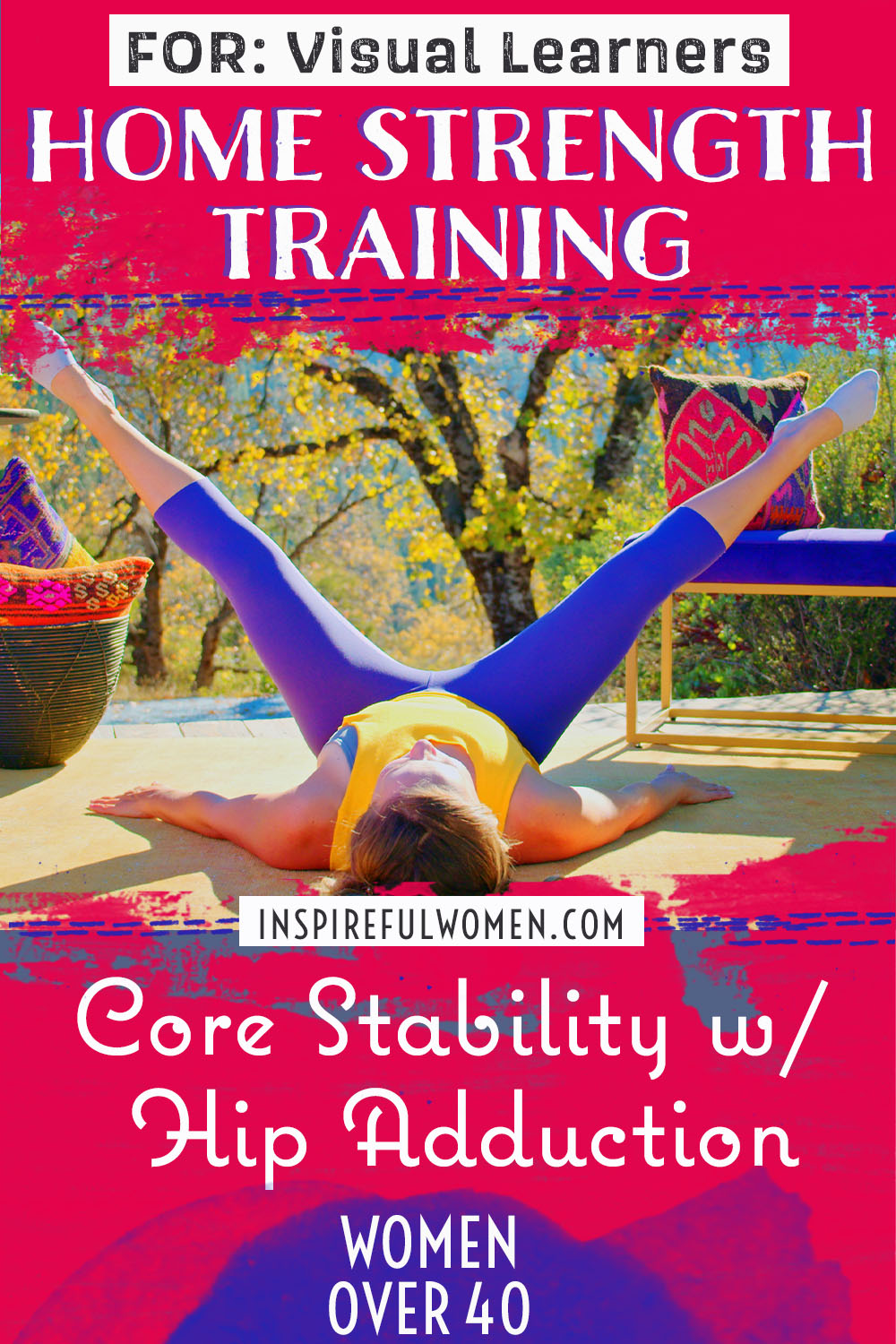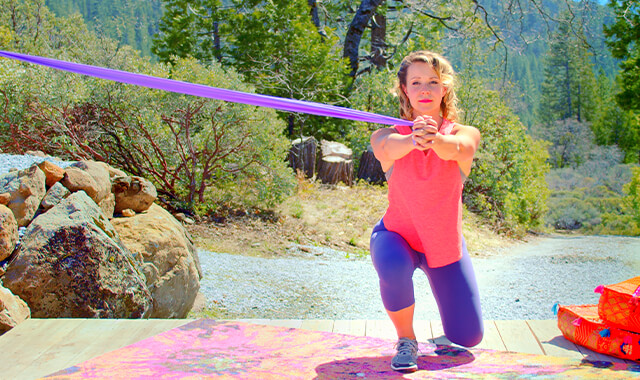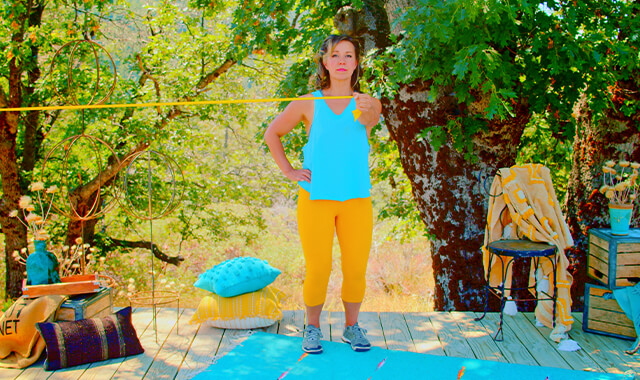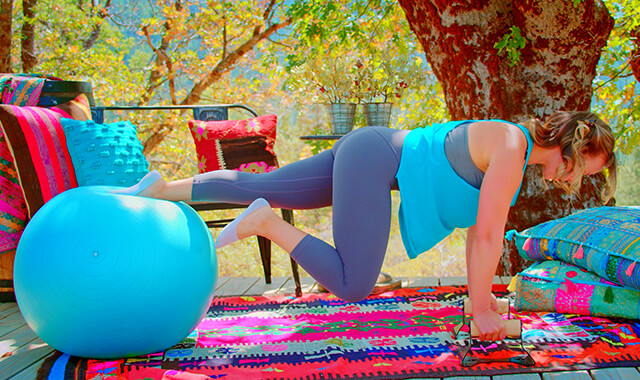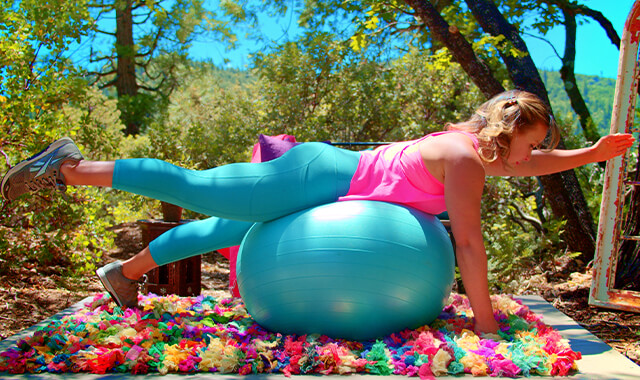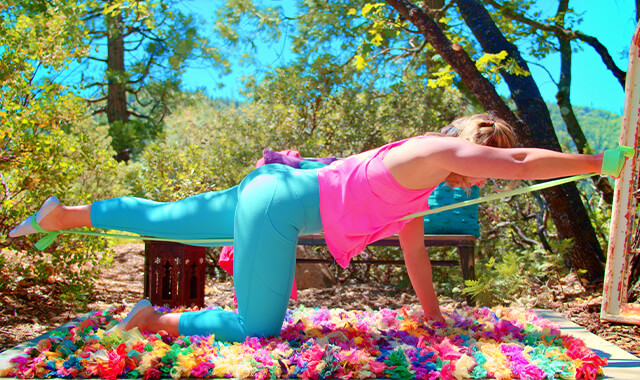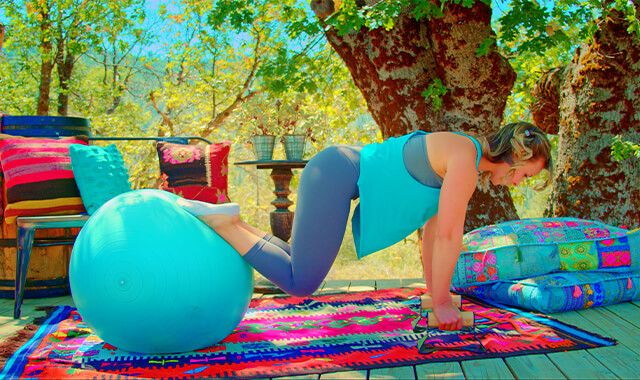Core Stability with Hip Adduction
How to Do the Core Stability with Hip Adduction Floor Exercise | In-Depth Guide [VISUAL LEARNERS] Beginner
Proper Form, Common Mistakes, & Variations + Easier & Harder | Home Resistance Training
WHAT DO YOU WANT TO SEE?
QUICK DEMO
QUICK DEMO
MUSCLES THIS WORKS
MUSCLES
MAIN MUSCLES WORKED IN Core Stability with Hip Adduction
TRANSVERSE ABDOMINIS, OBLIQUES, & RECTUS ABDOMINIS
OTHER MUSCLES WORKED:
- Pelvic floor
- Diaphragm
STARTING POINTERS
Starting Pointers
WHAT WE'RE DOING TODAY
ALL WE'RE DOING:
While laying on our backs, we'll bring our legs in and out.
This is an advanced abdominal exercise that is used to strengthen the core muscles and the muscles of the hip joint. The abdominal muscles have to work to hold the pelvis still as the muscles of the hips (flexors and adductors) hold the hips bent so the legs are straight up and together. The movement begins as the legs are lowered out to the side, then the hip adductors pull the legs back in again. This is a great way to work on the range of motion of the hip joint, adductor strength, and core strength all at the same time. Adding in a Kegel exercise while pulling the legs in will help to strengthen the pelvic floor muscles (good for bladder control).
Hip adduction is especially important for balance and the ability to recover from a trip or slip (fall prevention). The adductors work with all of the muscles of the hip to stabilize the joint during all upright activities: walking, running, climbing a ladder, up and down stairs. Working the hip adductors at the same time as strengthening the core muscles is important for teaching the body to stabilize the core as the legs are moving. Not only will this exercise improve core strength, balance, stability and motor control, it will also tone the inner thighs.
HOW TO DO THE EXERCISE
LOOKS
HOW Core Stability with Hip Adductions SHAPE OUR BODY
Flat stomach, toned and tapered waist, improved posture, confident, graceful movement.
PROPER FORM
PROPER FORM: Core Stability with Hip Adduction
EQUIPMENT, SETS & REPS
EQUIPMENT
- Mat
- Washcloth for under neck if needed
SUGGESTED STARTING WEIGHT FOR WOMEN:
None
SETS & REPS:
10
PACE:
Controlled movement.
BODY POSITION
BODY POSITION FOR THE Core Stability with Hip Adduction
BODY STANCE: Lie on your back. Neutral spine (includes neck - washcloth for support if needed), shoulders relaxed on the floor.
LEGS: Hips bent to 90 degrees. Legs straight up, knees straight. Legs together.
FEET: Toes pointed, ankles crossed.
ARMS: On the floor, by the sides.
HOW TO DO
HOW TO DO Core Stability with Hip Adductions
CUE: Focus on using your lower abdominals to help lower your legs out and to pull them back in.
Open your legs by moving them straight out to the sides.
Try to lower them at the same time. Once you have reached the limit of your movement. Pull them back in, and pull all the way up until the ankles are crossed.
The movement of your legs should be smooth and controlled with a focus on keeping your torso still.
Repeat for the designed number of reps. Alternate which ankle crosses on top.
HOW TO SAFELY GET OUT OF THE EXERCISE
Bring your legs together, bend your knees to the table top position. Lower one leg to the floor, lower the other leg to the floor. Roll to your side and sit up.
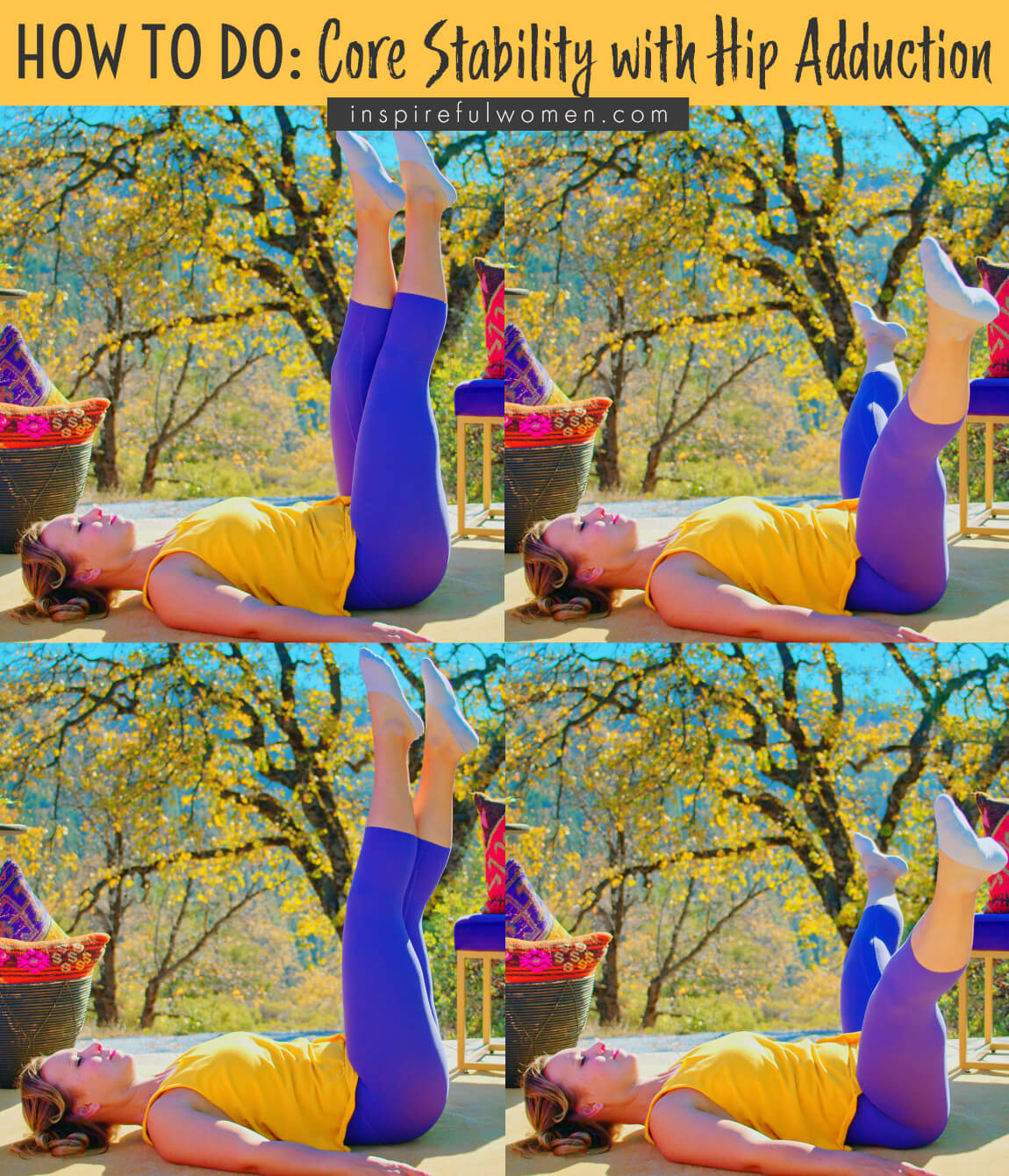
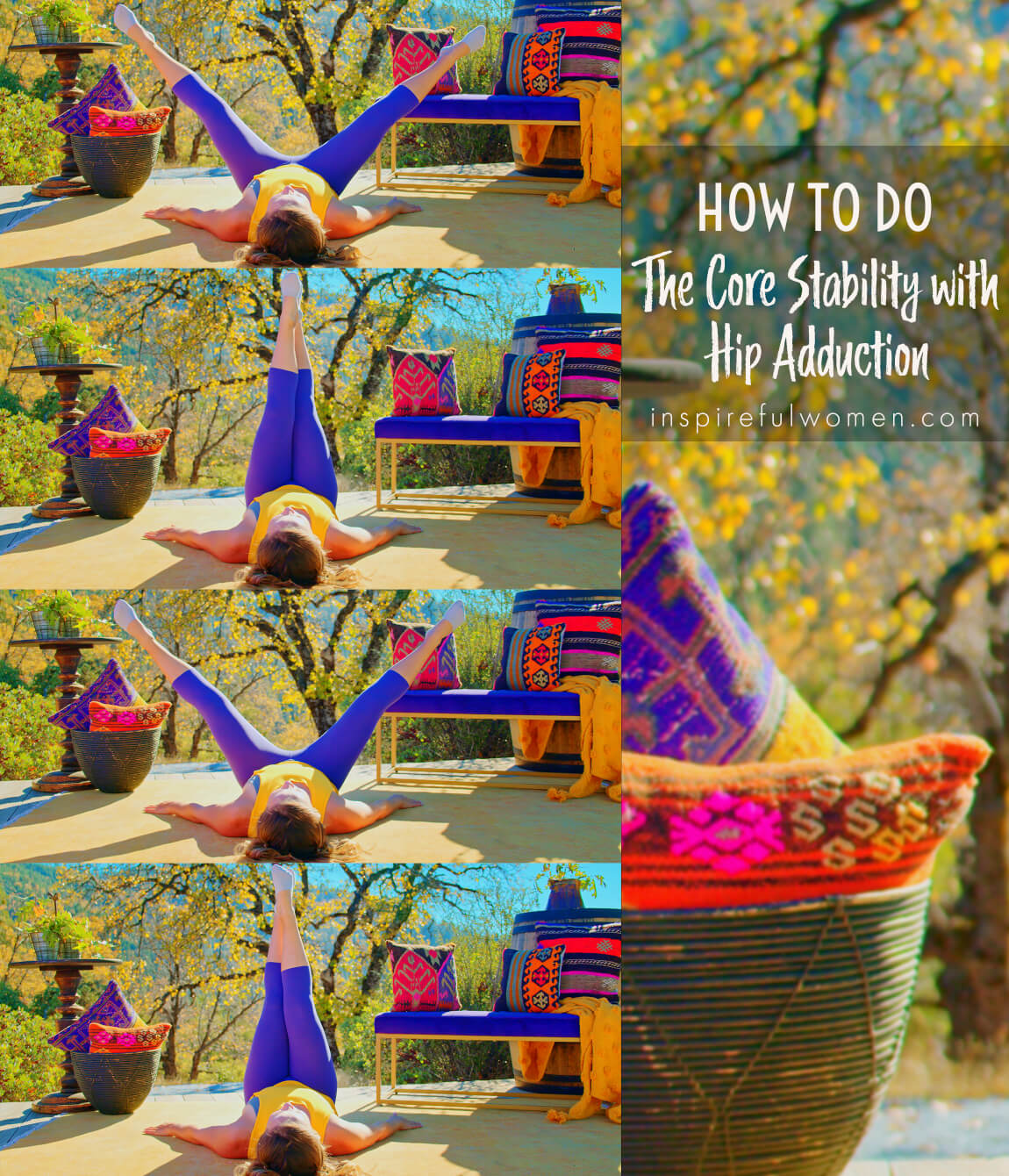
COMMON MISTAKES
COMMON MISTAKES
WHAT TO AVOID WITH THE Core Stability with Hip Adduction
KEY TIP:
Guess what? Good news! Many avoids are the same for most movements. Once you learn the basics, there's really only a few extra avoids for each individual movement.
1. Avoid Abs Bulging Out
AVOID: Avoid letting your abdominal muscles bulge out.
WHY NOT?
- This is the most common mistake.
- You should not see your lower abdomen pooch or bulge out when the abdominal muscles are active.
- This means that you are pushing your rectus abdominis (6-pack muscle) out instead of using your transverse abdominis to stabilize your midsection.
WHAT TO DO:
- This most frequently happens when you are first lifting the legs or when your core muscles get tired.
- Make sure to lift one leg at a time, concentrating on pulling the belly down towards the spine without flattening your low back.
- Correct activation of your abdominal muscles will result in a flat or slightly “scooped” out appearance of your lower abdominals.
- If you are unable to activate your abdominals without them bulging out
- Work on pulling your belly button down towards your spine in a hook lying position (feet on the floor, knees bent)
- Add in controlled breathing while maintaining the position.
- Master this exercise before progressing core exercises.
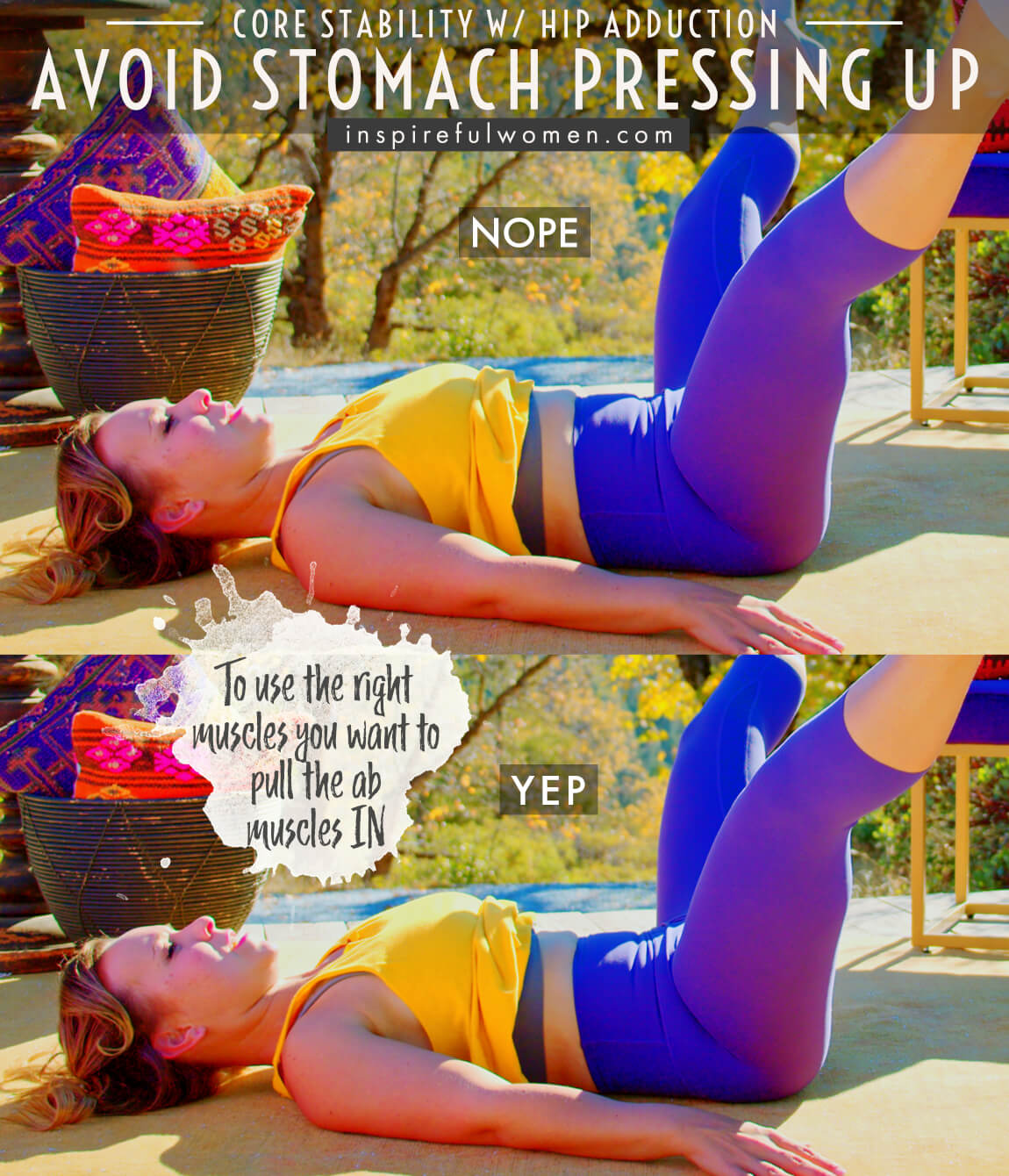
2. Avoid Arching Low Back
AVOID: Avoid arching your low back.
WHAT TO DO:
- Maintain a neutral spine position to prevent low back joint injury, muscle strain or damage over time.
- If your ribs lower ribs flare upwards or your belly is lifted up - this indicates you are arching your low back. Your pubic bone and front hip bones should be in one plane - can check by placing fingertips on the pubic bone and set the base of your palm on the hip bones - your hand should be flat.
- This can happen if you move the arms up too far overhead or your legs too close to the floor.
- Limit how far you move your limbs.
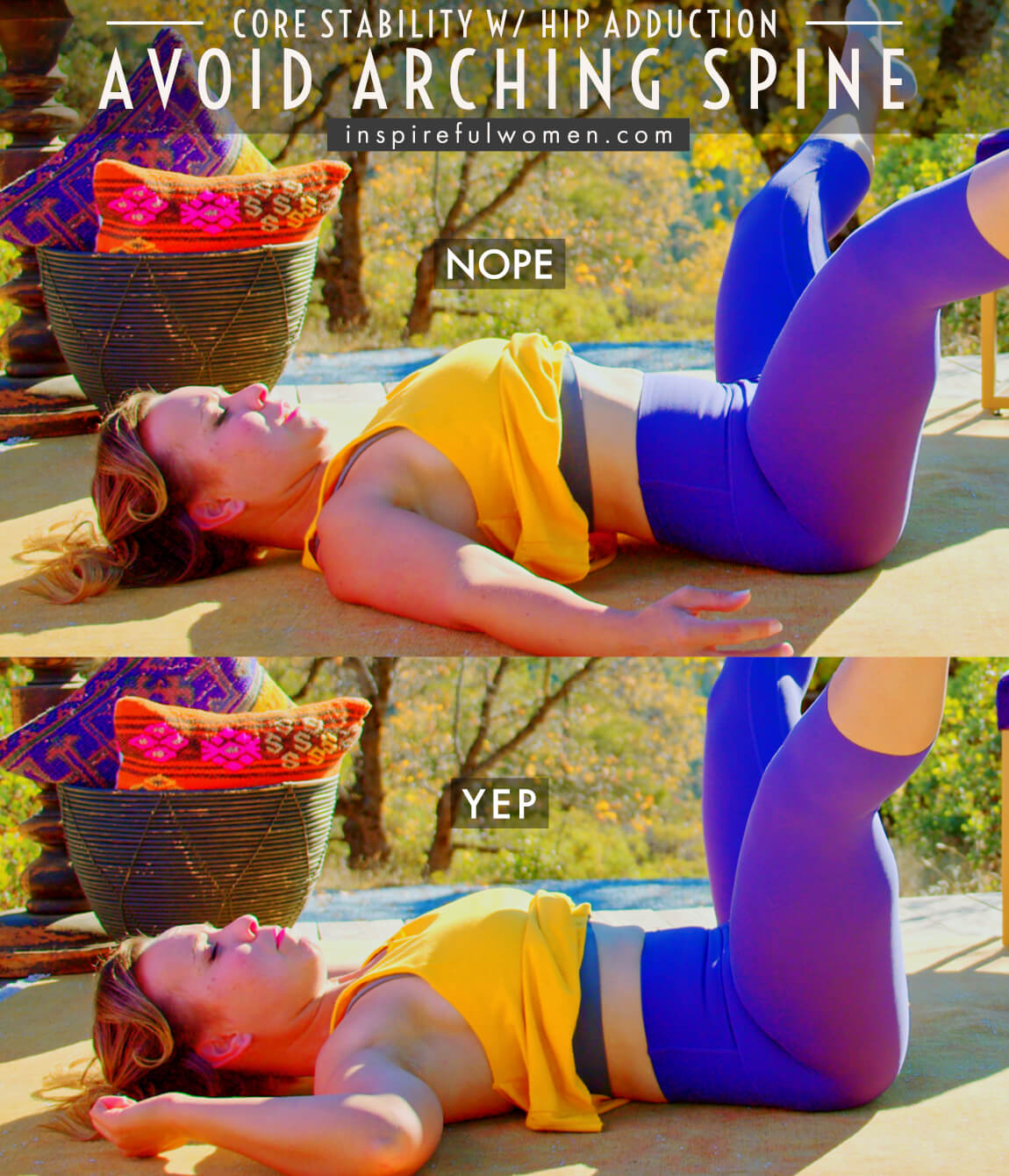
3. Avoid Flattening Low Back
AVOID: Avoid flattening your low back.
WHAT TO DO:
- Maintain a neutral spine position to prevent injury or muscle strain.
- You should not be able to feel your low back pressed into the floor.
- Work on activating your core muscles without flattening your low back.
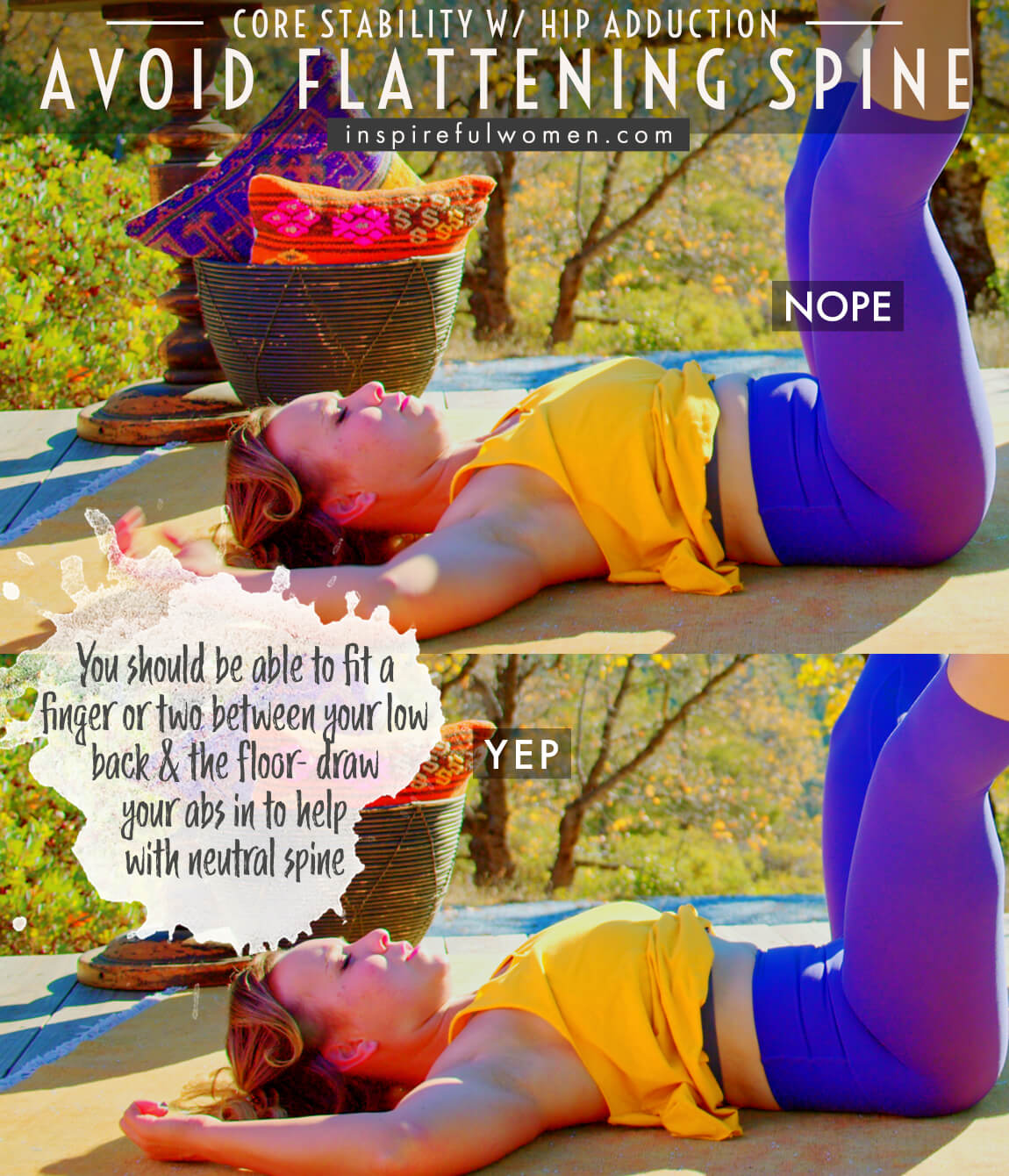
4. Avoid Holding your Breath
AVOID: Avoid holding your breath.
WHAT TO DO:
- When first learning core exercises it can be difficult to keep the abdominals activated and continue a normal breathing pattern.
- Inhaling and exhaling will increase the core muscle activity, and bring oxygen to the muscles as they work.
- It is helpful to work on abdominal muscle activation coordinated with breathing before adding the leg movement.
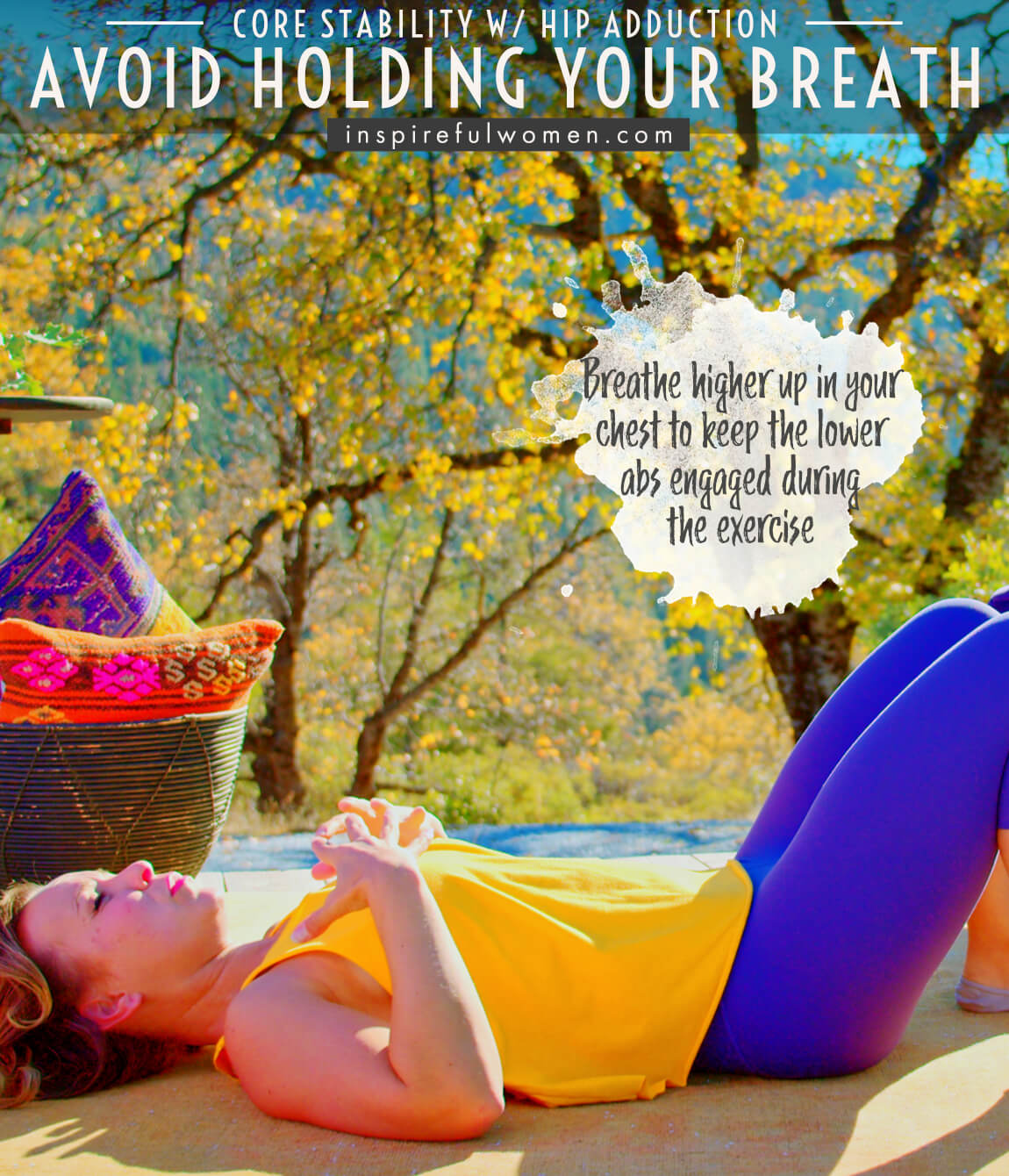
VARIATIONS
VARIATIONS
VARIATIONS OF Core Stability with Hip Adduction
3-5 second pause
Hold in end position
Performing the exercise with a 3-5 second hold when the legs are at the end of your range of adduction - this will challenge the isometric endurance of the muscles.
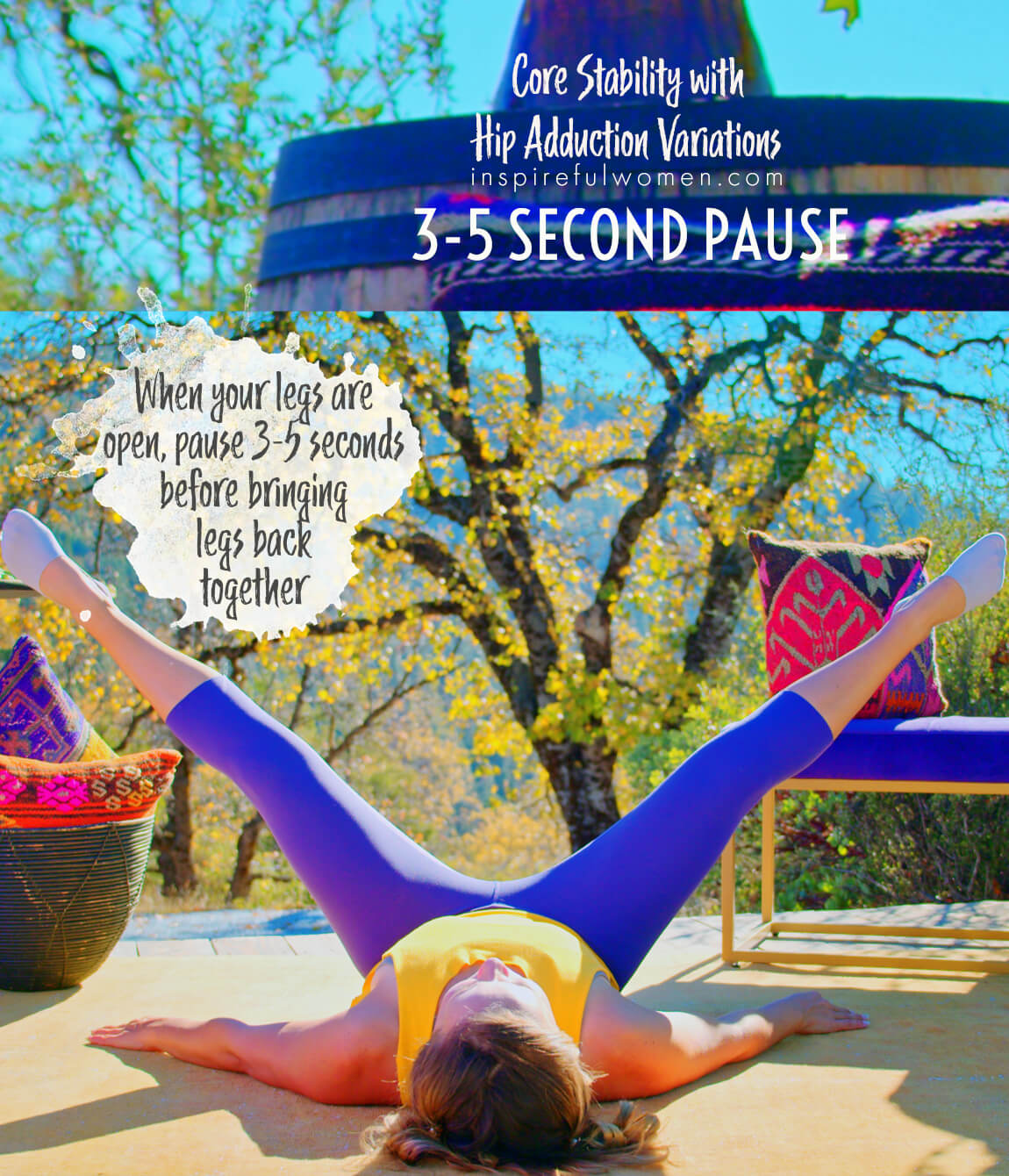
Heels Together External Hip Rotation
Heels Together
In the starting position, externally rotate the hips so that the heels are together and the toes are pointed out to the sides.
This will increase the activity of the hip external rotators: obturators, gemelli, piriformis and gemelli - working isometrically to hold the hip in external rotation as the legs move through abduction and adduction.
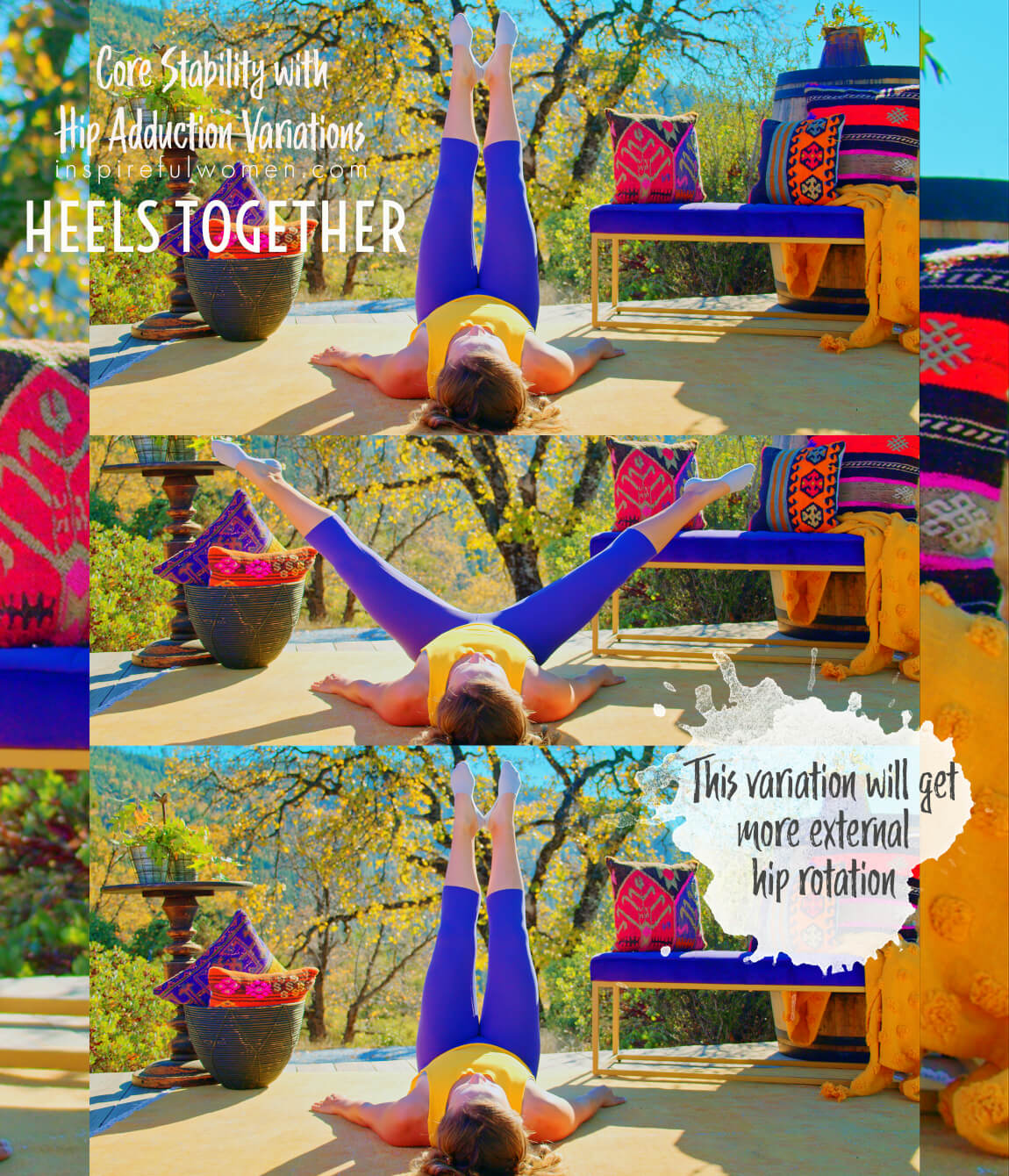
MAKE IT HARDER
HARDER
MAKING THE Core Stability with Hip Adduction MORE CHALLENGING
single leg
One Leg at a Time
Leave one leg up straight up in the air - position it right over your hip joint (the ankles will not cross in this variation). Take the other leg out into abduction and pull it back in. Alternate left and right legs. This will increase the activity of the obliques, iliopsoas and transverse abdominis as they work to prevent the pelvis from moving with the leg.
- Avoid letting the stationary (nonworking) leg move out to the side to counterbalance the other leg.
- Keep the nonworking leg held right over the hip joint, keep it still.
- Avoid letting the pelvis tip/or rock.
- Only let the working leg move out as far as you are able to keep the pelvis level.
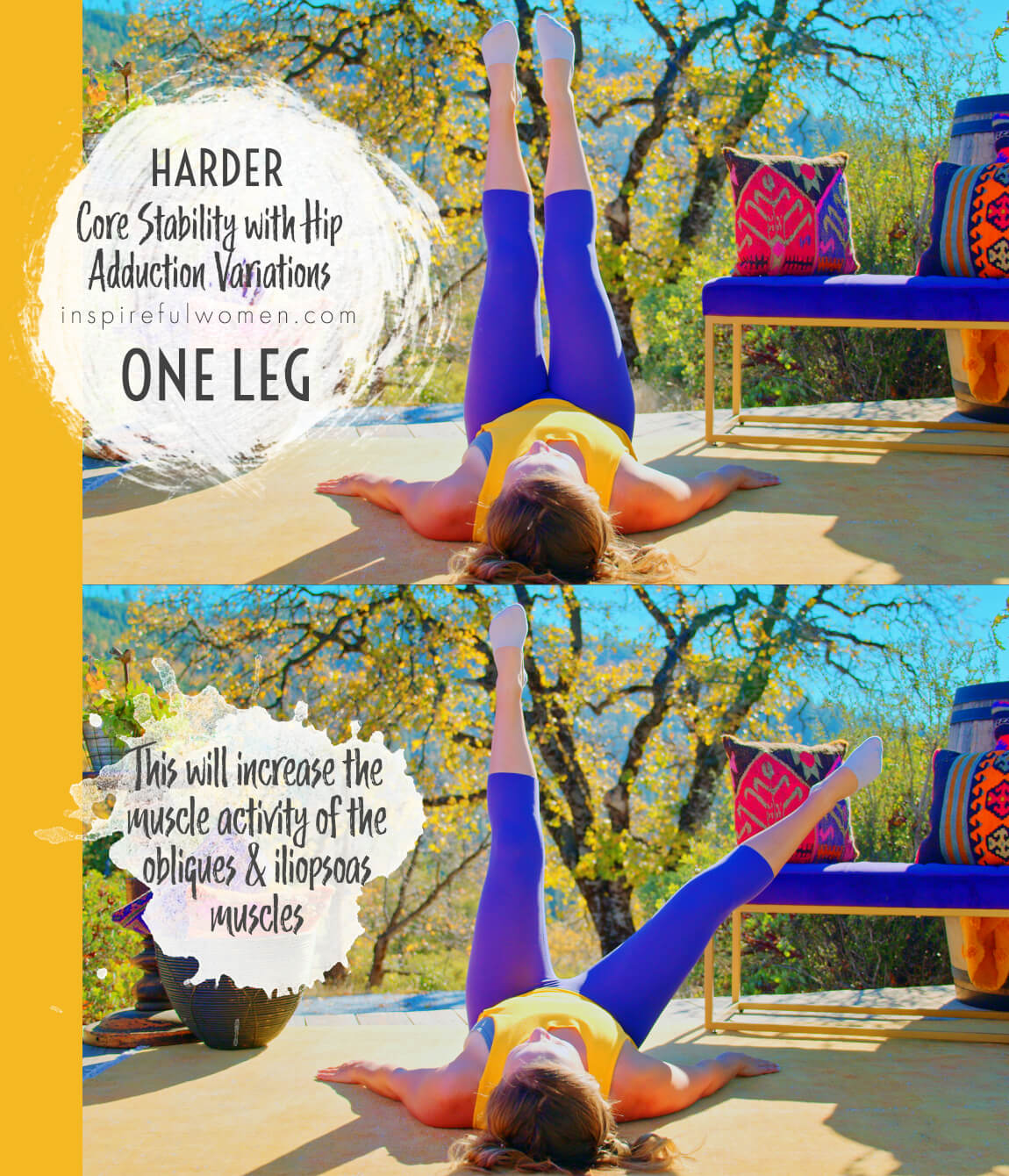
MAKE IT EASIER
EASIER
MAKE THE Core Stability with Hip Adduction MORE DOABLE
bent legs
bent legs
The exercise can be done with the knees bent to 90 degrees. The lever arm will be shorter so there will be less resistance for the abdominals and hip adductors to work against.
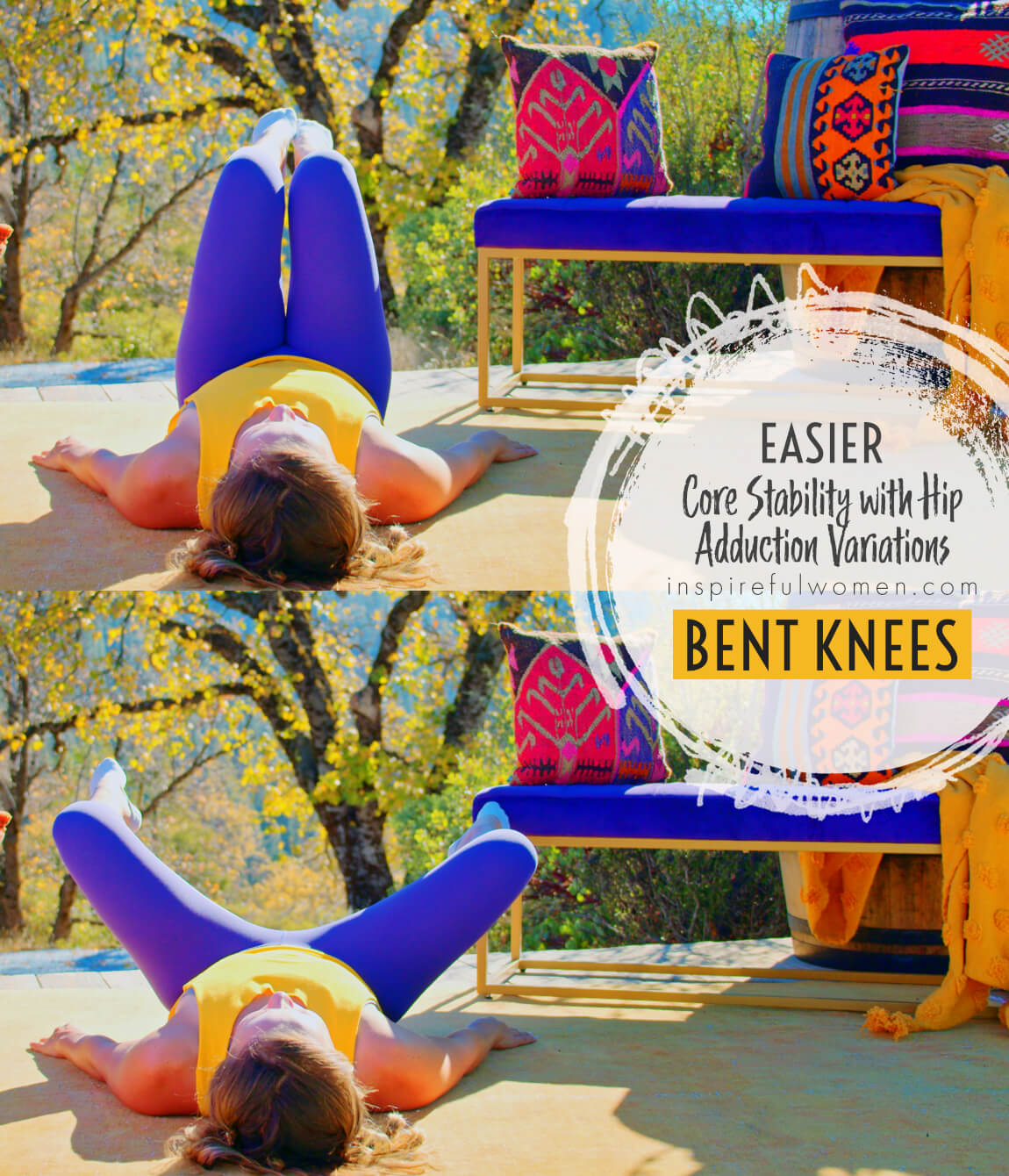
WHAT WE'RE DOING TODAY
WHAT & WHY
BENEFITS OF TRAINING THE core muscles
WHAT
LAYING DOWN EXERCISES YAY
This is one of my favorite core exercises. I will probably end up writing this on every core exercise blogpost, but core exercises have changed the strength of my body a LOT. I am able to have a good comparison because, welp, embarrassingly I never did them before at all. I didn't really understand their value so I skipped them. I feel so different in my body when exercising and doing daily life now that these movements have been a part of my regular workout routine.
These movements are done lying down on your back, making them a nice way to start or end your day. Lying down lets you concentrate on activating the abdominal muscles without worrying about the back muscles. These exercises seem pretty simple but they can be very challenging and do a great job of activating the core.
MAIN MUSCLE WE ARE TRYING TO ACTIVATE
It is important to really understand and feel the abdominal muscles working the way they are supposed to work. The main muscle you are trying to activate is the transverse abdominis which is deep - deeper than the rectus abdominis (6-pack) muscle. This is the corset muscle - it is attached to the ribs, the pelvis, iliopsoas, and connective tissue in the front of the torso, and wraps around your midsection to join the fascia that attaches to the back muscles. When activated it feels like you have shrink-wrapped your mid-section, just like cinching up a corset or back brace. If you have never heard of this muscle before and have no idea how to activate it, start with the Transverse Abdominis Activation exercise before moving on to the others.
The key to the core exercises is being able to find and activate this muscle. The transverse abdominis muscle runs across your midsection, from the ribs to the public bone, around the sides of the torso, and attaches to the spine through fascia, it is like a big back brace. It is one of the most important spinal stabilizers, unfortunately, many people are not even aware of it and they don’t know how to activate it. A bonus is to be able to activate the pelvic floor muscles at the same time. This will take time and concentration. The biggest mistake people make is that they are not patient enough to make sure they are using the correct muscles and they progress the exercises too quickly. This set of exercises is designed for making it easy to feel the correct muscles working.
WHY BOTHER DOING IT?
WHY
WHY DO WE EVEN CARE?
Core exercises should be considered the foundation for all exercises - you must be able to stabilize your midsection to be able to use your arms and legs in a healthy and effective way.
TYPE OF CORE EXERCISES MATTER
Exercises like sit ups, crunches or Russian twists, involve holding the legs and arms still and moving the low back (lumbar spine) over and over again. Sometimes this is even done while holding weight. This type of movement trains the muscles to move through the spine. This type of exercise, bending over & over at the spine, will actually weaken the tissues that support the spine, the ligaments and discs. These exercises work the rectus abdominis muscle which acts to bend the back (flex), it does not stabilize the spine, it does not even attach to the spine.
Exercises that train our core muscles to stabilize the spine instead of moving the spine helps to prevent damage to the low back. This is what most physical therapists will tell you.
HELPS HAVE THE STRENGTH, BALANCE & COORDINATION NEEDED TO DO EVERYTHING BETTER & MORE EFFICIENTLY
Unfortunately, a very high number of people in the U.S. will have back pain at some point in their lives. Also, once you start lifting weights to increase the strength of your legs and arms, or increase your activity to include heavy work like shoveling, you want to be sure that your core muscles are strong enough to keep up.
Strong and healthy abdominals impact just about everything we do in our daily lives. When the abs are stronger you can move with less effort, lift more, carry more, and walk and bike further. The core muscles are the center of the body - they all work together to coordinate the lower and upper body and the left and right sides of the body. Healthy core muscles will improve balance and coordination.
Learning how to move and exercise with good form will help prevent back pain, and if you injure your back, having good core strength will help you recover more quickly. Core exercises will increase the strength of your core, but more importantly, the exercises train the muscle how to do their job. Their job is to make subtle coordinated changes constantly in order to hold and move the body. These exercises train the muscles of the torso for endurance, strength, and motor control (the ability of the muscles to work together to stabilize the trunk as the arms and legs are moving). Many people are unsure of how to activate their core muscles, especially the transverse abdominis. The main job of the transverse abdominis is to compress and stabilize the midsection. The core muscles need to work together all day long, in a highly coordinated fashion to keep us upright during all of our daily activities.
If you have ever had back pain or an injury, complex pregnancies and/or deliveries, pelvic floor pain, abdominal surgery, including cesarean sections - sometimes the transverse abdominis is not responsive. It is not uncommon for muscles to “shut down” after pain or injury. And in the case of abdominal surgeries, it is necessary to get through these muscles. Different surgeons have different approaches, but to get through to the contents of the abdomen, you must get through the muscles, so the muscles have been injured. After the surgery or trauma, the muscles need to be re-educated, to learn to do their job. This is no different than rehabilitation after a sprain, strain, or tear of the other muscles in your body.
Untrained core muscles don’t always cause back or neck pain, when the core is not stable, it affects the way we use our arms and legs. Poorly trained core muscles can cause hip, knee, ankle, foot, shoulder, and arm pain or injury.
These exercises focus on activating the muscles that compress the abdomen. The muscles support and protect the internal organs, including the liver, stomach, intestines, and bladder. Increasing the intra abdominal pressure by activating the muscles improves the function of the internal organs including digestion, bladder and bowel control, and breathing.
EVERYDAY LIFE
EVERYDAY LIFE &
MUSCLE FUNCTION
HOW WE USE OUR Core MUSCLES IN EVERYDAY LIFE
1. THE TRANSVERSE ABDOMINIS, AND OBLIQUES WORK ALL DAY LONG TO STABILIZE THE SPINE DURING DAILY ACTIVITIES:
- Walking
- Running
- Dancing
- Lifting
- Pulling
- Carrying
- Pushing a wheelbarrow
- Washing windows
- Kicking or throwing a ball
- Reaching
- Climbing stairs/ladder
- Stepping into a high car/truck
- Golf
- Painting overhead
- Vacuuming
- Sweeping
- Gardening
2. THE RECTUS ABDOMINIS FLEXES THE SPINE
- Sitting up from lying down - like getting out of bed
- Prevents you from falling backward - balancing on a ladder while washing windows or painting.
3. THE TRANSVERSE ABDOMINIS, OBLIQUES, DIAPHRAGM, AND PELVIC FLOOR COMPRESS THE ABDOMEN
- Going to the bathroom
- Coughing
- Sneezing
- Laughing
- Supports the internal organs for improved function - especially digestion
HOW TO FEEL WHAT MUSCLE IS WORKING
How to Feel What Muscle is Working
The most important muscle to activate for this group of exercises is the transverse abdominis muscle. This is a hard muscle to find. It is broad and deep. When you activate this muscle the belly button and spine move closer together, the ribs on the left and right sides of the front of the torso come in closer together. You should feel like you are tightening up a corset or shrink-wrapping your midsection.
Transverse abdominis: Lie on your back, knees bent. Find the two pointy parts on the front of your pelvis. Drop your fingers down off of the bony part, in the direction of your belly button. Now clear your throat. You should feel the transverse abdominis contract under your fingertips.
If you cannot find this muscle, or if you are unsure if you are doing it right, try the Transverse Abdominis Activation exercise.
SCIENCY STUFF
SCIENCY STUFF
SPIFFILICIOUS FACTS ABOUT MUSCLES & MOVES
It could be argued that it is not necessary to do specific exercises for your core muscles because you are using them all day long. This is true to some extent. If you are relatively active, with good posture, good control over your midsection, you have established healthy movement patterns - keeping your spine neutral and stable during heavy lifting or repetitive movement, and have no history of back pain, or abdominal surgery (cesarean sections, hysterectomies) or complications/difficulty in pregnancy or childbirth, then you may not have to do specific core exercises - because you are using those muscles correctly all day long.
ALLLL MUSCLES & WHEN
ALL MUSCLES WORKING & WHEN DURING THE Core Stability with Hip Adduction
All of the muscles of the torso will be working to stabilize throughout the movement.
The iliopsoas, rectus femoris, and adductors (pectineus, adductor brevis, longus,and magnus, gracilis) are active isometrically to hold the legs in the starting position. The quadriceps works isometrically to keep the knees straight.
The movement will begin by the hip abductors (gluteus medius and minimis). After passing neutral, gravity will pull the legs down.
The hip adductors will work eccentrically to control the movement as the legs are lowered.
The adductors contract concentrically to pull the legs back up to the starting position.
The abdominal muscles will work harder to stabilize the pelvis as the legs are opened out.
PIN IT FOR LATER!

